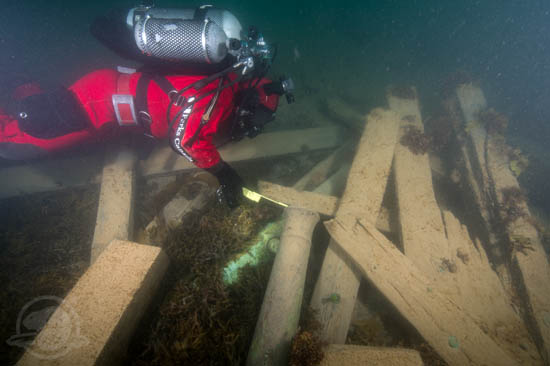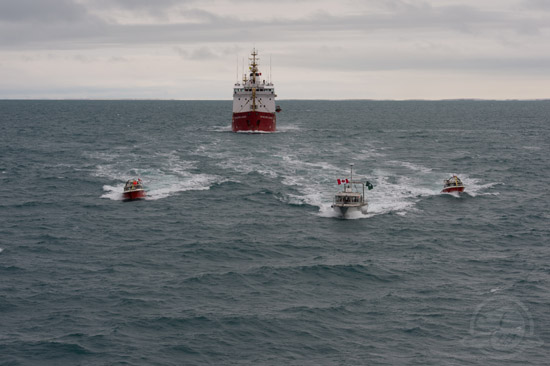Finding Franklin

The Franklin ship discovered in early September by the 2014 search team in the Canadian arctic has been identified as HMS Erebus, the flagship of Sir John Franklin’s 1845 two-ship expedition and the vessel directly under his command. HMS Terror, remains to be found.
The confirmation was made by Parks Canada underwater archeologists, following a meticulous review of data and artifacts observed from the Arctic Ocean’s seabed and using high-resolution photography, high-definition video and multi-beam sonar measurements.
This announcement comes just three weeks after remains of the ship were found in the eastern stretches of the Queen Maud Gulf off the western coast of the Adelaide Peninsula.
On May 19, 1845, HMS Erebus and HMS Terror of the Royal Navy departed Greenhithe, England, on a much-heralded Arctic expedition in search of a Northwest Passage. Under the command of Sir John Franklin, with Captain Francis Rawdon Crozier second in command, the expedition’s two ships set out with a total complement of 129 officers and men. The two expedition ships were last seen entering Baffin Bay in August 1845.
Quick Facts:
- The Government of Canada’s partners for the 2014 Victoria Strait Expedition included Parks Canada, Fisheries and Oceans Canada, the Canadian Coast Guard, the Royal Canadian Navy, Defence Research and Development Canada, Environment Canada, and the Canadian Space Agency, as well as the Governments of Nunavut and Great Britain.
- Private and non-profit partners included the Arctic Research Foundation, the Royal Canadian Geographical Society who additionally brought in The W. Garfield Weston Foundation, Shell Canada and One Ocean Expeditions as partners.
- Since 2008, there have been six major Parks Canada-led searches for the lost Franklin Expedition ships, pain-stakingly covering many hundreds of square kilometres of the Arctic seabed.
- The initial discovery of a ship belonging to the Franklin Expedition, made by side-scan sonar towed from the Parks Canada research vessel Investigator, was confirmed on September 7, 2014, using Parks Canada’s remotely operated vehicle.
- On September 30, 2014, it was confirmed that the ship is HMS Erebus.
- HMS Erebus was a Hecla-class bomb vessel constructed in 1826.
- The vessel was named after the dark region in Hades of Greek mythology called Erebus.
- HMS Erebus and HMS Terror were outfitted with steam engines (converted from railway locomotive engines), and had iron plating added to their hulls.

Leave a Comment







